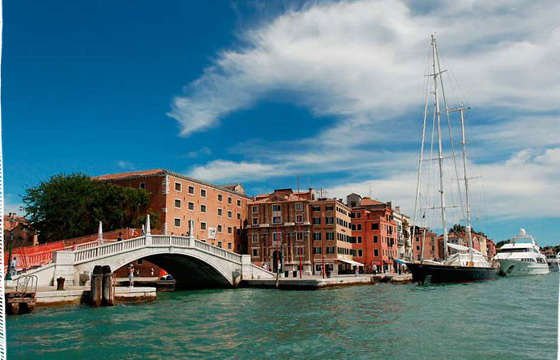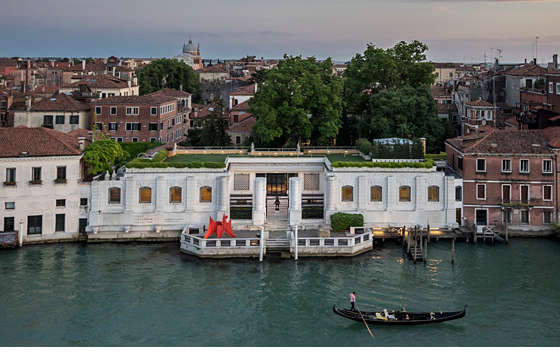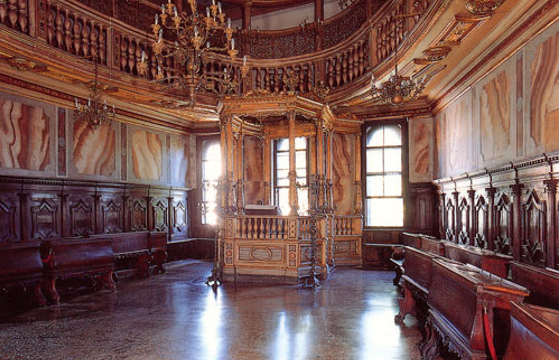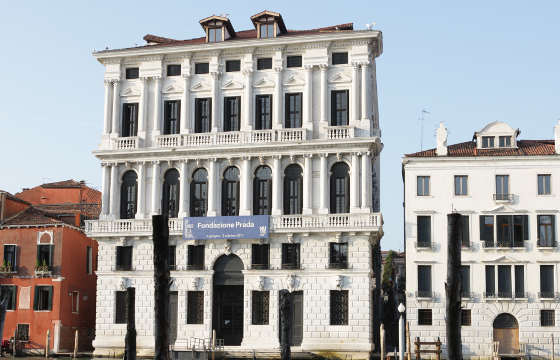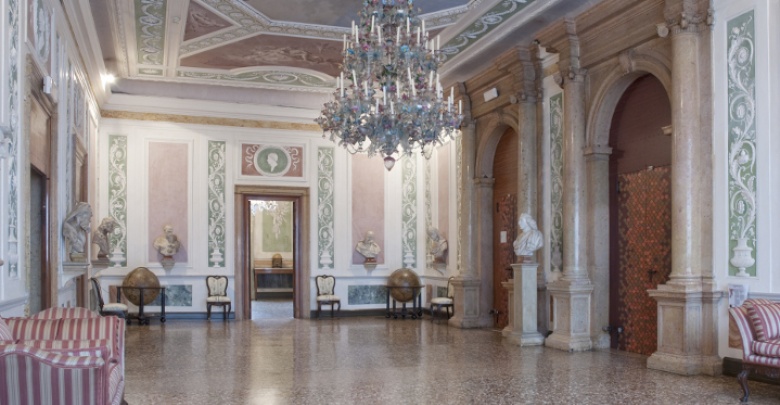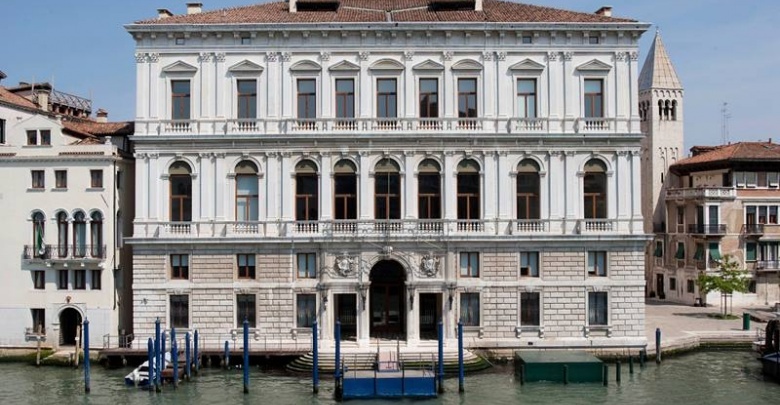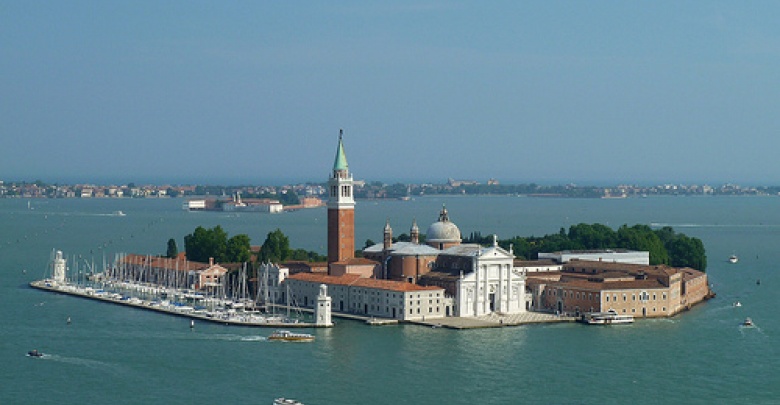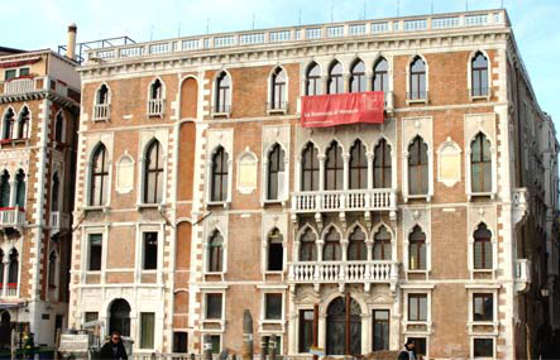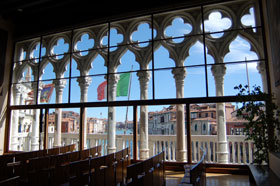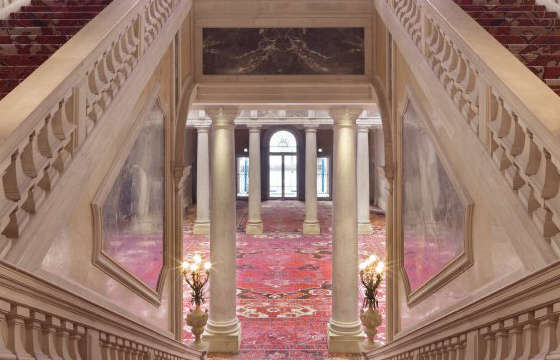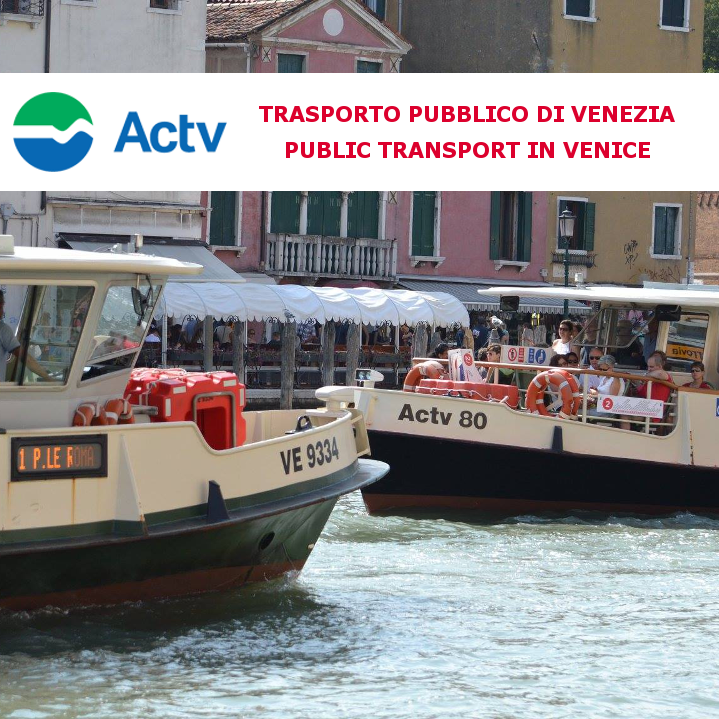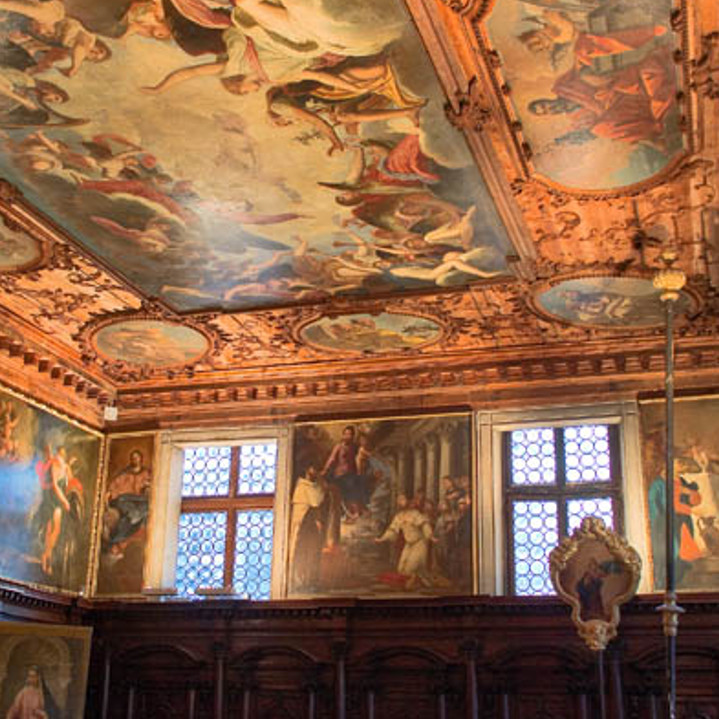You are here
FOUNDATIONS AND OTHER MUSEUMS
FOUNDATIONS AND OTHER MUSEUMS
Please visit the museum website for the latest updates on opening times and other information. Thank you.
Naval Historical Museum of the Italian Navy
Italian Naval History Museum
Riva S. Biasio, Castello 2148, 30122 Venice (Actv waterbus: Lines 1, 4.1, 4.2, Stop: Arsenale)
The museum belongs to the Italian Navy who manages it as an exhibition area of historical memory: " ... to emphasise how audacious the Italian naval spirit was in every age," (Royal Decree 1919). A fifteenth-century building, which used to be the “Granary” of the Venetian Republic, at Campo San Biagio, next to the Arsenale is home to the Naval History Museum. Part of the complex is still under the jurisdiction of the Italian Navy. It is the most important museum of its kind in Italy. Other than the main building whose exhibition area covers 5 floors with a total of 42 rooms, the Ships Pavilion, which is located in the former “oar workshops” of the Arsenale forms part of the museum as well.
Residents of Venice can buy entrance tickets at a preferential price simply by showing a valid identity card directly at the museum’s ticket office proving their residency.
Free entrance for both disabled people and those accompanying them (in order to access the pavilion there are three steps, there is no ramp but the security personnel are available to help those who might have difficulty).
SHIPS PAVILION
Rio dell’Arsenale, Castello 2162 c, 30122 Venice (next to Arsenale bridge)
The building, once the “oar workshop” that now houses part of the collection of vessels of the Naval History Museum of Venice, consists of three wings arranged in a series, and a fourth, similar in size, that is perpendicular to the former. The building was constructed in the mid-sixteenth century to serve as an oar workshop and depot. Shortly after its completion in 1577, it was temporarily adapted as the head office of the Great Council of Venice, the main government body of the city, following the disastrous fire that had destroyed much of Palazzo Ducale and had made it uninhabitable for a long time. The rooms essentially retained their function of specialist oar joinery, supported by a very busy workshop and storage areas, until the mid-nineteenth century. Following the reorganisation of the Arsenale, which began after 1866 when Venice was annexed to the Kingdom of Italy, the premises were used as storehouses and workshops by the military engineer corps. At that time, the roofing was restored, with the introduction of an interesting two-way system of iron beams integrating the wooden trusses of the roof. Since 1980, the oar workshop areas have been known by the name of the “Ships Pavilion”, which is an extension of the Museum’s main building and houses vessels of great historical importance.
Information:
Naval History Museum of the Italian Navy:
Open: March 21 to November 4:From 10:00 a.m. to 6:00 p.m. (last admission at 5:00 p.m.). November 5 to March 20: From 10:00 a.m. to 4:00 p.m. (last admission at 3:00 p.m.).
Closed: Tuesdays
Ticket: FULL ticket € 10.00 / REDUCED ticket € 8.00
Ship Pavilion: [TEMPORARILY CLOSED]
CHECK on the museum website for any additional concessions
Peggy Guggenheim Collection
Dorsoduro 704, 30123 Venice
The Peggy Guggenheim Collection is the most important museum in Italy for European and American art of the 20th century created by American heiress Peggy Guggenheim (1898-1979). She assembled the core of her collection in London, Paris and New York between 1938 and 1947 with the advice of artists and critics. The Peggy Guggenheim collection, which features masterpieces of Cubism, Futurism, European Abstract art, Surrealism and American Abstract Expressionism, with works among others by Picasso, Pollock, Kandinsky, Mirò, de Chirico and Dalì, is located in Venice in Palazzo Venier dei Leoni on the Grand Canal, the former home of the American patron of the arts. The museum was inaugurated in 1980 and presents Peggy Guggenheim's personal collection of 20th century art, masterpieces from the Hannelore B. and Rudolph B. Schulhof Collection, the Gianni Mattioli Collection, the Nasher Sculpture Garden, as well as temporary exhibitions. The Peggy Guggenheim Collection is owned and operated by the Solomon R. Guggenheim Foundation, which also operates the Solomon R. Guggenheim Museum in New York and which is a partner of the Basque Regional Government for the programming of the Guggenheim Museum Bilbao.
BUY NOW the admission ticket
Information:
Open: 10:00 am – 6:00 pm
Closed: Tuesdays, 25th December
Tickets: full admission fee is € 16,00, Over 65yrs € 14,00, Rolling Venice Card holders pay € 9,00 , students under 26 € 9,00
Ghetto of Venice - Jewish Museum
Cannaregio 2902\b, 30121 Venice
The Ghetto of Venice is the ancient Jewish neighborhood in the center of the city.
What makes it unique are the five synagogues that are concentrated there - two of which are open to the public - and in which religious services and ceremonies are celebrated to this day. The Ghetto still hosts all the religious and administrative institutions of the Jewish community of Venice.
The Jewish Museum is temporarily closed for renovation, but it is possible to visit the Ghetto of Venice in full autonomy, thanks to a multilingual App, which can also be purchased on Venezia Unica, which will guide you through the history, the historic buildings, including five Synagogues, the study buildings, the so-called Midrashim and the ancient oven.
Information:
Open:
From 5 November to 29 March: Sunday – Thursday 10.00am – 5.30pm / Friday: h. 9.00 – 15.00
From March 30 to November 4: Sunday – Thursday h. 10.00am – 6.00pm; Friday 9.00am – 5.00pm / Eve of Sukkot: h. 10.00am – 5.00pm / Hoshana Rabbah: h. 10.00am – 4.30pm
Closed: Saturdays, Jewish holidays, January 1st, December 25th
Ticket: FULL ticket / REDUCED ticket
Prada Foundation
Calle de Ca’ Corner, Santa Croce 2215, 30135 Venice
Ca’ Corner della Regina is the Venetian venue of the Fondazione Prada, a cultural institution founded by Miuccia Prada and Patrizio Bertelli in 1993. The historic Baroque palazzo was built between 1724 and 1728 by Domenico Rossi for the Corner family of San Cassiano. It was erected on the ruins of the Gothic building in which Caterina Corner, the future queen of Cyprus, was born in 1454. In 1800, the palazzo became property of Pope Pius VII, who assigned it to the Congregation of the Padri Cavanis. Until 1969, it hosted the Monte di Pietà, whereas between 1975 and 2010 it became the home of the ASAC – the Historical Archive of Contemporary Art of the Venice Biennale. Starting from 2011 it hosts exhibitions and cultural activities realized by Fondazione Prada.
Information:
Open: from Monday to Sunday, 10 am – 6 pm (last entrance 5.30 pm)
Closed: Tuesdays
Ticket: Full 12 €; Concessions 9 € (students under 26 / visitors over 65 / FAI card holders / Carers to visitor with disabilities); Free (under 18 / visitors with disabilities / journalists with valid press card / visitors over 65 residents in the Municipality of Venice only on Wednesdays).
Scala Contarini del Bovolo
Corte Contarini del Bovolo, San Marco 4299, 30124 Venice
Hidden in a maze of streets and canals, very close to Campo Manin, along one of the main tourist routes in Venice (railway – Academy), appears an architectural gem characterized by a style that is among Renaissance, Gothic and Byzantine: the Scala Contarini del Bovolo. The spiral staircase most impressive and valuable in Venice is a perfect synthesis of different styles: Renaissance (for the use of some elements such as the capitals), Gothic (for the construction technique) and Venetian-Byzantine (for the form).
BUY NOW the admission ticket
Information:
Open: from Tuesday to Sunday 10.00 am – 1.30 pm and 2.00 pm – 6.00 pm
Closed: 15th August, 1st November, 25th and 26th December, 1st January
Ticket: Scala Contarini del Bovolo Full-price Ticket and Reduced Ticket / Admission to Oratorio dei Crociferi
Querini Stampalia Foundation onlus
Santa Maria Formosa, Castello 5252, 30122 Venice
Among the most interesting cultural complexes in Venice, the Palazzo Querini Stampalia is the seat of the Querini Stampalia Foundation, created in 1868 by Count Giovanni, and home to a Library, a Museum and temporary exhibition spaces.
The general-reference library is open late at night and on Sundays and holidays. The Museum recreates the atmosphere of a patrician residence, with the eighteenth-century neoclassical furniture, porcelain, sculpture, globes and paintings from the fourteenth to twentieth centuries on exhibit, most of them from the Venetian school. The works on display include paintings by Giovanni Bellini, Jacopo Palma il Vecchio and il Giovane, Bernardo Strozzi, Marco and Sebastiano Ricci, Giambattista Tiepolo, Pietro Longhi and Gabriel Bella.
On the ground floor of the sixteenth-century palace, the area restored by Carlo Scarpa in 1963 has been defined as the most cultured and aristocratic architectural design of the twentieth century; the recent renovation work by Valeriano Pastor and Mario Botta completes the profound renovation of the building.
The mission of the Foundation is to invest in culture. It intends to be a production centre based on the study and the enhancement of its historic heritage and the legacy of its museum, and on an open engagement with the most advanced thinking of our contemporary age. An intensive educational programme is addressed to various segments of society, offering new interpretations of the Museum, the exhibitions and the architecture of the building itself, in workshops and educational activities open to the public.
Currently the public can count on a Querini Stampalia even richer in exhibition spaces and works of art.
A new exhibition section has been set up to fit the works, furniture, antique volumes, sculptures and coins that document the history and art of Venice from the 16th to the 20th century (which belonged to the Cassa di Risparmio di Venezia now Intesa Sanpaolo ). This exhibition section is located on the third floor of Palazzo Querini Stampalia, from which you can enjoy an extraordinary view over the rooftops of Venice and the nearby Church of Santa Maria Formosa.
Inside, there are two noteworthy paintings by Canaletto, the great sketch of Paradise by Domenico Tintoretto and the one of the Last Judgment by Giambattista Tiepolo, as well as works by great masters of the Venetian school up to Caffi and Ciardi.
BUY NOW the admission ticket
Information:
Open: from Tuesday to Sunday 10:00 am – 6:00 pm
Closed: Mondays
Ticket: Venezia Unica City Pass ADULT, JUNIOR / Venezia Unica City Pass SAN MARCO / Full Admission or Reduced admission
Palazzo Grassi
San Marco, Campo San Samuele, 30124 Venice
Punta della Dogana
Dorsoduro 2 , 30123 Venice
Both overlooking the Grand Canal, and recently restored by Japanese architect Tadao Ando, Palazzo Grassi and Punta della Dogana are the two exhibition venues of the François Pinault Foundation. They present important exhibitions of contemporary art, with works from the Pinault Collection. The artworks by the most important artists of our time testify to the tireless energy and tenacious spirit of discovery that, over the years, have contributed to the formation of one of the largest art collections in the world.
Information:
Open: 10:00 am – 7:00 pm
Closed: Tuesdays; 25th December
Tickets:Full € 18,00 (valid for both seats) Reduced € 15,00. Free admission on Wednesdays for residents in Venice, students of the Venetian Universities.
Giorgio Cini Foundation
Isola San Giorgio Maggiore, Venice
Today the Fondazione Giorgio Cini is an internationally recognized cultural institution which continues to draw inspiration from its original vocation and at the same time plays a leading role as
a center for studies and a venue for meetings and debate on current issues. Its academic activities – research projects and events aimed at improving our “knowledge of the world” – continuously interact with thinking on the current political and social scene aimed at promoting multidisciplinary approaches and experimenting with exchanges between forms of knowledge and various scientific and professional cultures. The intention is thus also to provide innovative tools for analysis and comprehension, as well as propitious opportunities for “building a new world.”
The Fondazione Giorgio Cini is not only an invaluable store of literary, artistic, musical, and archive treasures, but also a crossroads for cultures and ideas and a place devoted to the quest for truth and the spread of knowledge, thus perpetuating the tradition of the Benedictine abbey and the Island of San Giorgio Maggiore.
Information:
Open:From December 21st to March 20th: every day except Tuesday, from 10.00 am to 3.00 pm every hour (last departure at 3.00 pm).
From 21 March to 20 December: every day, from 10.00 to 18.00 hourly (last departure at 18.00)
Tickets: Full € 14.00; Reduced € 12.00 (over 65 / under 26 / residents in the municipality of Venice / students / civil service participants)
La Biennale di Venezia
Cà Giustinian, San Marco 1364/a, 30124 Venice
Arsenale, Calle della Tana, 2169/S 30122 Venice
Giardini della Biennale, Castello (between Riva degli Schiavoni and S.Elena)
For over a century, La Biennale di Venezia has been one of the most prestigious cultural institutions in the world. Ever since its foundation, it has been at the forefront in the search and promotion of new artistic trends; it organizes important international art and architecture exhibitions in the venues of the Giardini and the Arsenale, and its Venice International Film Festival, as well as its Music, Theatre and more recent Dance Festivals rank among the finest in the world.
Thanks to recently available new spaces such as Ca’ Giustinian, a venue for events and exhibitions, the Central Pavilion and the new Biennale Library at the Giardini, many permanent new activities have come to join the traditional annual events and its educational activities have grown in importance.
La Biennale di Venezia is increasing its role as an institution that offers a continuous calendar of multi-disciplinary activities addressed to a wide audience composed mainly of young people and students, to the community of artists, to the city and to the Veneto region.
Information:
Tickets: Holders of the Venezia Unica Voucher pay reduced admission to the events organized by the Biennale di Venezia.
Ca' Foscari - Venice University
Dorsoduro 3246, 30123 Venice
Ca' Foscari, the home of the University since 1868 and a famous Gothic building overlooking one of the widest curves on the Grand Canal. Built in 1453 for the Foscari family, the building contains magnificent works of art and spaces of particular architectural and artistic interest, including the remarkable work of architect Carlo Scarpa, who completed two restoration projects here in the 1930's and 1950's. He designed the “Aula Baratto”, a space decorated with frescoes by Sironi and Deluigi, and famous for the unique view it offers visitors stretching from the Rialto bridge all the way to the complex of the Accademia.
The Ca' Foscari bridge connects the institutional headquarters of the University to Ca' Dolfin, which was recently reopened to the public after two years of restoration work. The sixteenth-century building is famous for the lavish “Silvio Trentin” lecture hall – an awe-inspiring space decorated with mirrors, stuccoes, and magnificent eighteenth-century frescoes.
Temporary exhibitions from the University's historical archives and other exclusive spaces enrich this tour that offers visitors a unique opportunity to discover the past and present of the Venetian University and its prestigious venues.
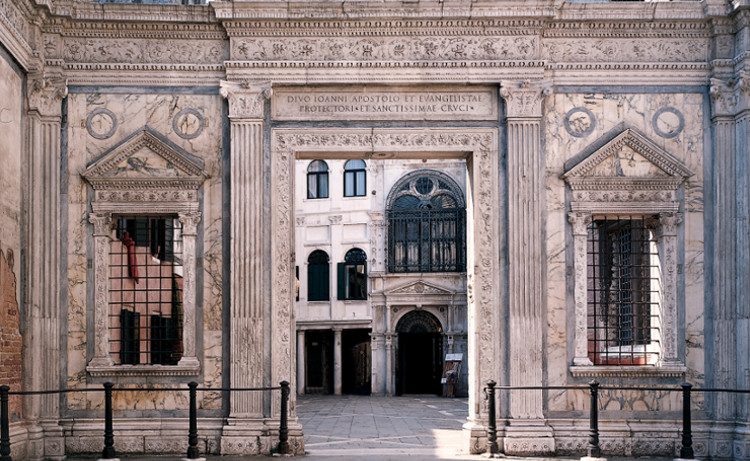
Scuola Grande San Giovanni Evangelista
San Polo 2454, 30125 - Venice
The Scuola Grande San Giovanni Evangelista was founded in 1261. It is a monumental complex with illustrious examples of Venetian Gothic, Renaissance and Baroque art and architecture, by Codussi, Lombardo, Massari, Morlaiter, Palma il Giovane, Tintoretto, Longhi. The School has been home to the lay brotherhood of the same name for over seven centuries, as well as a museum open to the public that hosts events, conventions, conferences, concerts, exhibitions, weddings, gala evenings.
Information:
Opening: h 9.30am - 1.00pm / 2.00pm - 5.30pm . The School opens its doors to the public only on the days when there are no regular conference activities
Tickets: Full ticket, Reduced Ticket students under 26 years / over 65 years
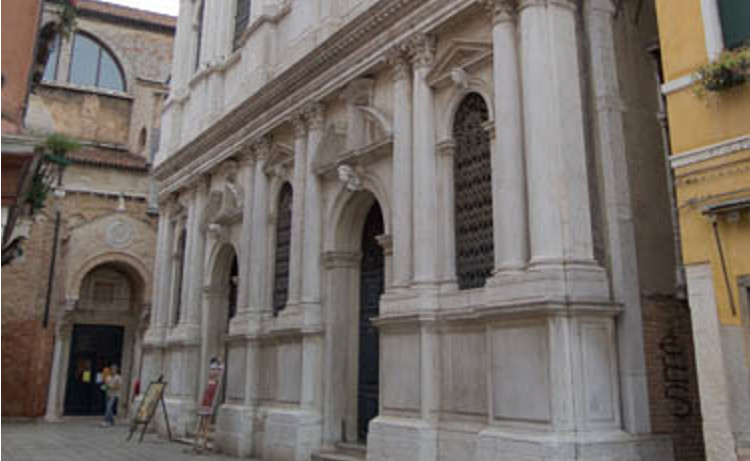
Scuola Grande dei Carmini
Dorsoduro 2616-2617 - Venice
The school of devotion and charity dedicated to S. Maria del Monte Carmelo ("dei Carmini") was elevated to Grande in 1767. The confraternity had built the current headquarters, designed by Caustello and Longhena, during the seventeenth century alongside to the church which belonged to the Carmelite monks.
The Scuola Grande dei Carmini is located on the corner between Campo dei Carmini and Campo Santa Margherita.
The internal halls of the School have fully preserved the original ancient furnishings, consisting of important oil paintings, rich stucco ceilings and original carved wooden reredos. In the Sala Capitolare, where the brothers met in assembly to approve the proposals put forward by the Guardian Grande, the most important representative of the school elected annually by the brothers together with the "Giunta", between 1739 and 1749 Giambattista Tiepolo painted the nine incomparable canvases of the ceiling depicting at the top the series of theological and cardinal virtues and other attitudes of the spirit and the mariegola, which contains the rules of the brotherhood. Also noteworthy in the Archive and Hotel Rooms are the masterpieces by G.B. Piazzetta and Padovanino.
Information:
Opening: EVERY DAY (h. 10am - 5pm)
Tickets: Full ticket, Reduced Ticket under 26 years / over 65 years
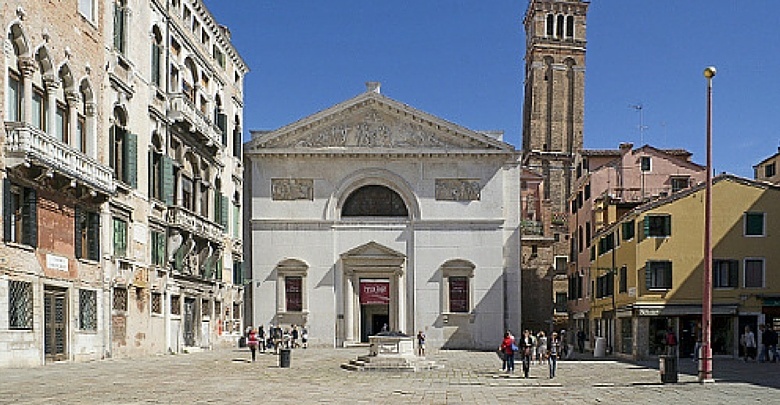
Music Museum of Venice
Campo San Maurizio, San Marco 2603 - Venezia
The Music Museum is an exhibition dedicated to one of the artistic manifestations that have made Italian culture great: violin making. The collection "Antonio Vivaldi and his time" by Maestro Artemio Versari is a journey into the golden age of Italian violin making. The exhibition recounts the Venetian musical eighteenth century through the pieces belonging to the various workshops or "schools" that have made Italian manufactures famous throughout Europe.
Information:
Opening: Itinerary
- visit to the exhibition of over 200 original musical instruments, coming from lutherie schools throughout Italy [opening hours: every day 10 am - 1 pm and 3 pm - 6 pm];
- visit to the violin collection of the greatest Italian luthiers of the Baroque and 19th century, in the church of San Vidal [opening hours: every day 9.30am - 6pm];
- possibility to attend the general rehearsals [6 pm - 6.30 pm NOT available on Wednesday and Sunday] and the final performance of a baroque concert [8.30 pm NOT available on Wednesday and Sunday]
Tickets: Full ticket, Reduced Ticket under 26 years / over 65 years
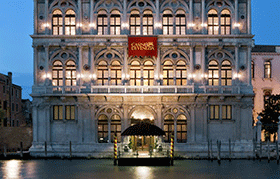
Ca' Vendramin Calergi
Casinò di Venezia
Wagner Museum
Cannaregio 2040, 30121 Venice
Ca’ Vendramin Calergi is one of the most important and luxurious Renaissance stately homes overlooking the Grand Canal. It houses game rooms, a restaurant, lounge bar, function and convention rooms. Built between the late fifteenth and early sixteenth century, this charming building is enhanced by a beautiful Italian garden, one of the few with a view and direct access to the main waterway of the city. Work of the brilliant architect Mario Codussi, the building was once the residence of the most influential aristocratic families of the Serenissima and still today, in addition to housing Venice Casino, it is a representative office for the city of Venice.
Information:
Venice Casino (www.casinovenezia.it)
Open daily (except for 24 and 25 December)
From 11.00 Slot machines / From 16.00 Gaming tables
Formal Dress Code. Admission is allowed to adults on presentation of a valid ID.


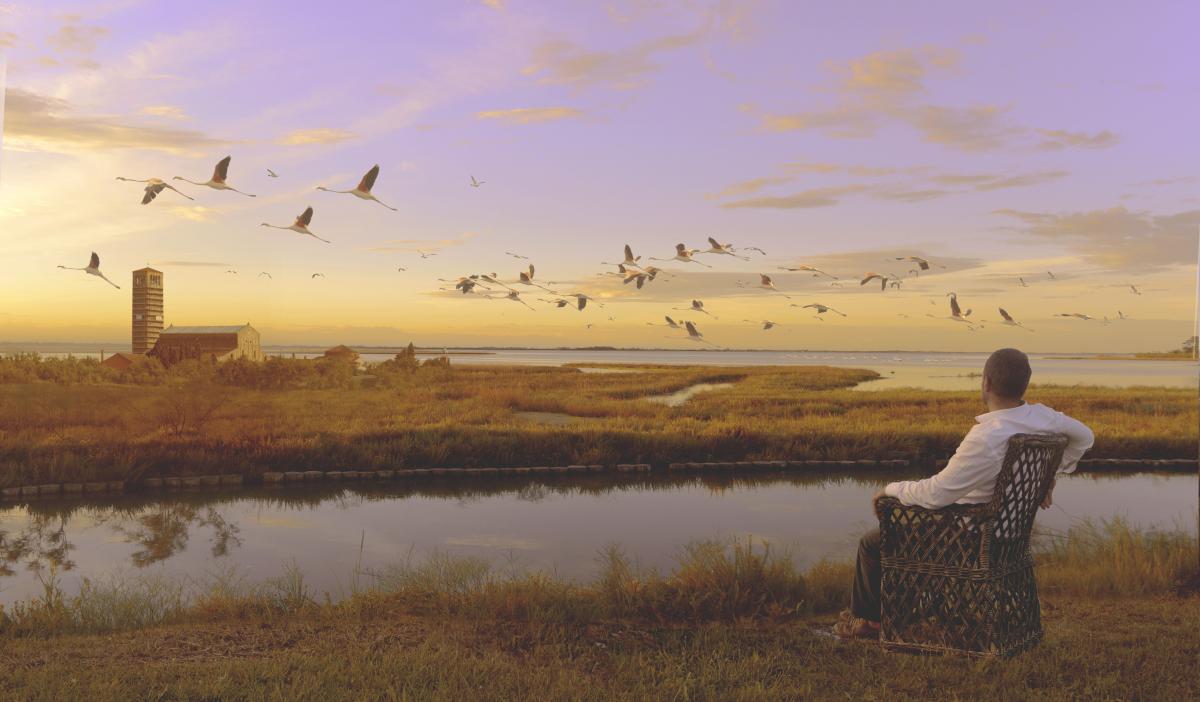
Casa Museo Andrich (Andrich House)
Modern Art Gallery, Historic garden
Torcello Island, 30100 Venice
Casa Andrich overlooks the mudflats and shoals of the Palude della Rosa; from March to September, flamingos may be seen from the shores that offer a view of one of the most beautiful lagoon landscapes in Torcello, in the atmosphere of the splendid 11,000 square meter garden.
The Modern Art Museum
The effervescence of art in Venice from the 1950s to the 1980s, in the home of 2 artists,
Lucio Andrich and Clementina De Luca, where silks, tapestries, glass, sculpture, paintings, engravings, mosaics and furniture are exhibited cyclically, and illustrated in a tour guided by their grandson Paolo Andrich.
Information:
Opening: Friday afternoon, Saturday and Sunday
Languages : Italian / English / French
Ticket: full-price ticket
How to get there: ACTV Public transport from Venice (line 12) and from Cavallino/Treporti every half hour at 10 and 40.


